Kirby Larson's Blog, page 33
May 28, 2013
Teacher Tuesday
Heather Jensen is another of those generous people who said yes when a complete stranger reached out to ask about participating in Teacher Tuesday. (In fact, not one person I asked said no!) Heather teaches fifth grade at Hillside Elementary, in Harrison, Michigan. She and I chatted about read-alouds and about finding that one book that turns a student into a reader. But first, a peek at Heather's past!
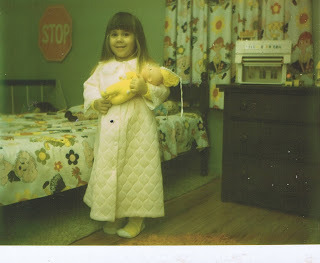
Favorite school lunch as a kid: The pizza that was shaped like a rectangle. We usually had it once a week.Best friend in grade school: Koralynn (Eve) WrightTeacher who inspired you to stretch: My high school Contemporary American Literature teacher. Mr. Hannah showed me the strength of reflection and showed me multiple perspectives to the world.The one thing you always wished you could do in grade school but never achieved: Find the love of reading. I remember struggling with learning how to read and being in a group while the rest of the class was reading. Then came the SRA kits and book reports that I fumbled through. It wasn’t until sixth grade that I remember falling in love with reading. My Side of the Mountain brought me into the world of reading. I became a member of the Nerdy Book Club and fell in love with YA literature. I think of elementary school as my lost years as a reader.
Heather, you told me that you wanted to chat about choosing the right books for read-alouds and about finding that book that turns each kid into a reader. What were your experiences being read aloud to as a child?
My mom and dad read to me as a young child. I remember going to the library for story time. Read-aloud time for me was when I did not have to struggle with words and I could finally understand what was happening. It gave me access to new worlds, new friends, and new perspectives.
Why do you think it’s important to read aloud to your students?
I still love being read aloud to. It is important to read aloud to my students because it gives them access to all types of genres and books that they may not be able to access just yet. The conversations that are generated after reading aloud often give me goose bumps and bring tears to my eyes. I see my struggling readers sharing their thinking and feeling a part of our reading community. It is very powerful! Plus it is so much fun to read aloud!
What skills/abilities do you think hearing read-alouds strengthens in your students?
The main skill I think a read-aloud strengthens is listening comprehension. I also think our ability to have a conversation and discuss books is a life-long skill. It also gives students the confidence to voice their thinking without having to struggle through a text.
How do you know which read aloud is right for your class?
I try to pick books that will help my students grow as people. I choose books that give different perspectives. I also try to pick books from several genres to introduce them to something different. Plus sometime you just need a really funny book to read and laugh with your students.
How can the right read aloud turn a kid into a reader?
It gives them a view into new worlds. I like to read the first book in a series. I like books that showcase kids around their age doing extraordinary things. Students often start asking for my read aloud book when I am close to finishing it. We start a sign-up sheet as to who to pass the book to next.
How do you show your students your own love of reading/books?
I talk to my students all the time about my own reading. They all know what genres I love and what my reading gaps are. They buy me books from my favorite genres. They recommend books to me and I move those to the top of my to be read pile so I can validate their choices. I show them my Good Reads page and share my progress. We write letters back and forth each week about our reading and I share my struggles with books as well.
Can you share a specific anecdote or two about a wonderful connection between a kid and a book?
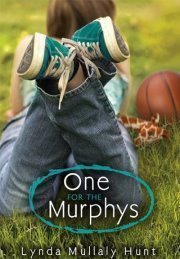
One for The Murphys was a perfect read for one of my boys who had been in a foster care home earlier in his life. He was able to open up to me in his reading letters about his own experiences in foster care. I do not think J. would have told me those details otherwise.
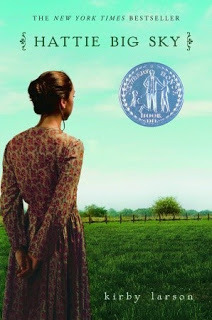
Hattie Big Sky brought one of my girls, T., into the world of historical fiction. Now she reads that genre whenever she can. T. was jumping with excitement when I brought in Hattie Ever After.
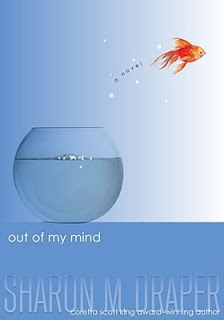
Out of my Mind changed C’s life profoundly. She realized she was not respectful to students with disabilities or anyone who was different. Melody gave her a new perspective and opened C’s mind. Shortly after reading the book, she came to me one morning and told me about two adults who had been making fun someone in a wheelchair at the football game. She told me she turned around and told them that their behavior was disrespectful and they needed to think before they speak. Imagine an eleven-year-old and the adults’ reaction. Priceless.
What advice might you give/do you give to the parents/guardians of your students regarding reading aloud at home?
My advice to parents/guardians is to read every day with your children. If you do not currently, get started and never stop even when they are teenagers.
It seems that with standardized testing and other demands on a teacher’s time that read-alouds are going the way of the rotary dial phone. What can other teachers/librarians do to resist this trend?
I feel teachers and librarians need to be forceful and stand united. We cannot back down. We need to educate our School Boards, government, and the public on the benefits of reading aloud to our students. We have to make the time for reading aloud every day.
What kinds of outside resources, if any, do you employ (Skype, author websites, guest speakers) to generate interest in books/reading?
I use author websites and Twitter to generate reading excitement and interest. We write letters to authors. I am fortunate that my school brings in authors (at least once a year). I would love to do more Skype visits with authors.
What do you wish I’d asked you that I neglected to ask?
I wished you would have asked me about the reading community in my classroom. We are an active community talking and sharing books every day. We have students from every classroom in the building stopping by our room to check out books. My students get to know their interests as well as their own and hand them books when they walk in the door. We know our strengths and our gaps. We use this knowledge to grow ourselves as people and as readers.
Readers -- I imagine you are as moved as I am by Heather's story -- growing from a struggling reader to powerful reading advocate. I don't know if I would have had the courage to stick with reading if it hadn't been easy for me as a kid. I can only imagine how Heather's experience helps her empathize and encourage all of her students. You can tap into more of Heather's thoughts about reading by following her on Twitter:@hmjensen31
Thank you, Heather!

Favorite school lunch as a kid: The pizza that was shaped like a rectangle. We usually had it once a week.Best friend in grade school: Koralynn (Eve) WrightTeacher who inspired you to stretch: My high school Contemporary American Literature teacher. Mr. Hannah showed me the strength of reflection and showed me multiple perspectives to the world.The one thing you always wished you could do in grade school but never achieved: Find the love of reading. I remember struggling with learning how to read and being in a group while the rest of the class was reading. Then came the SRA kits and book reports that I fumbled through. It wasn’t until sixth grade that I remember falling in love with reading. My Side of the Mountain brought me into the world of reading. I became a member of the Nerdy Book Club and fell in love with YA literature. I think of elementary school as my lost years as a reader.
Heather, you told me that you wanted to chat about choosing the right books for read-alouds and about finding that book that turns each kid into a reader. What were your experiences being read aloud to as a child?
My mom and dad read to me as a young child. I remember going to the library for story time. Read-aloud time for me was when I did not have to struggle with words and I could finally understand what was happening. It gave me access to new worlds, new friends, and new perspectives.
Why do you think it’s important to read aloud to your students?
I still love being read aloud to. It is important to read aloud to my students because it gives them access to all types of genres and books that they may not be able to access just yet. The conversations that are generated after reading aloud often give me goose bumps and bring tears to my eyes. I see my struggling readers sharing their thinking and feeling a part of our reading community. It is very powerful! Plus it is so much fun to read aloud!
What skills/abilities do you think hearing read-alouds strengthens in your students?
The main skill I think a read-aloud strengthens is listening comprehension. I also think our ability to have a conversation and discuss books is a life-long skill. It also gives students the confidence to voice their thinking without having to struggle through a text.
How do you know which read aloud is right for your class?
I try to pick books that will help my students grow as people. I choose books that give different perspectives. I also try to pick books from several genres to introduce them to something different. Plus sometime you just need a really funny book to read and laugh with your students.
How can the right read aloud turn a kid into a reader?
It gives them a view into new worlds. I like to read the first book in a series. I like books that showcase kids around their age doing extraordinary things. Students often start asking for my read aloud book when I am close to finishing it. We start a sign-up sheet as to who to pass the book to next.
How do you show your students your own love of reading/books?
I talk to my students all the time about my own reading. They all know what genres I love and what my reading gaps are. They buy me books from my favorite genres. They recommend books to me and I move those to the top of my to be read pile so I can validate their choices. I show them my Good Reads page and share my progress. We write letters back and forth each week about our reading and I share my struggles with books as well.
Can you share a specific anecdote or two about a wonderful connection between a kid and a book?

One for The Murphys was a perfect read for one of my boys who had been in a foster care home earlier in his life. He was able to open up to me in his reading letters about his own experiences in foster care. I do not think J. would have told me those details otherwise.

Hattie Big Sky brought one of my girls, T., into the world of historical fiction. Now she reads that genre whenever she can. T. was jumping with excitement when I brought in Hattie Ever After.

Out of my Mind changed C’s life profoundly. She realized she was not respectful to students with disabilities or anyone who was different. Melody gave her a new perspective and opened C’s mind. Shortly after reading the book, she came to me one morning and told me about two adults who had been making fun someone in a wheelchair at the football game. She told me she turned around and told them that their behavior was disrespectful and they needed to think before they speak. Imagine an eleven-year-old and the adults’ reaction. Priceless.
What advice might you give/do you give to the parents/guardians of your students regarding reading aloud at home?
My advice to parents/guardians is to read every day with your children. If you do not currently, get started and never stop even when they are teenagers.
It seems that with standardized testing and other demands on a teacher’s time that read-alouds are going the way of the rotary dial phone. What can other teachers/librarians do to resist this trend?
I feel teachers and librarians need to be forceful and stand united. We cannot back down. We need to educate our School Boards, government, and the public on the benefits of reading aloud to our students. We have to make the time for reading aloud every day.
What kinds of outside resources, if any, do you employ (Skype, author websites, guest speakers) to generate interest in books/reading?
I use author websites and Twitter to generate reading excitement and interest. We write letters to authors. I am fortunate that my school brings in authors (at least once a year). I would love to do more Skype visits with authors.
What do you wish I’d asked you that I neglected to ask?
I wished you would have asked me about the reading community in my classroom. We are an active community talking and sharing books every day. We have students from every classroom in the building stopping by our room to check out books. My students get to know their interests as well as their own and hand them books when they walk in the door. We know our strengths and our gaps. We use this knowledge to grow ourselves as people and as readers.
Readers -- I imagine you are as moved as I am by Heather's story -- growing from a struggling reader to powerful reading advocate. I don't know if I would have had the courage to stick with reading if it hadn't been easy for me as a kid. I can only imagine how Heather's experience helps her empathize and encourage all of her students. You can tap into more of Heather's thoughts about reading by following her on Twitter:@hmjensen31
Thank you, Heather!
Published on May 28, 2013 06:30
May 24, 2013
Friend Friday
I am so pleased to turn the blog over today to my dear, dear friend, Laura McGee Kvasnosky.
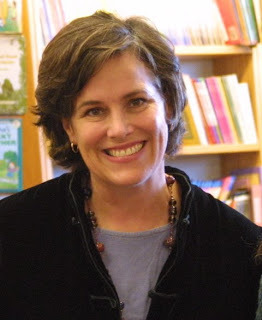
Book Adventures with Zelda and Ivy~ by Laura McGee KvasnoskyMy fox sisters celebrate a new edition this month and it seems like a good time to tell their story.
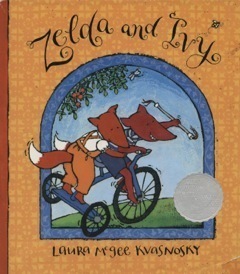
Zelda and Ivy was first published by Candlewick Press in 1998: three short stories about two fox sisters in one picture book format. Both the text and illustrations seemed to drop into my lap: gifts. But with further thought, I realized this material had been trying to become a book for a long time.We all experience moments when life is larger than usual, moments full of emotion and humor that we recognize as the stuff of story. I gathered a critical mass of such times from childhood home movies and conversations with my sibs. I wanted to make a picture book that carried our growing-up experience: our neighborhood parades, and fairy dust and, maybe most importantly, our relationships. I am the middle of five children. I know what it is to be a bossy, imaginative big sister and an adoring, gullible little sister. I thought sibling rivalry could fuel the drama.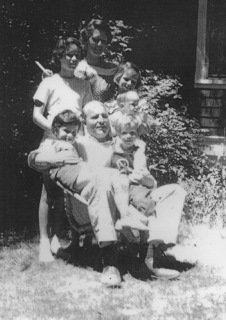 The McGee family
The McGee family
I first worked with this material in a project called Summer Shorts. Here’s the dummy. It included four little stories about a family with five human children. It made the rounds at publishers and was roundly rejected. Years passed while I sold other projects and got started in the picture book world.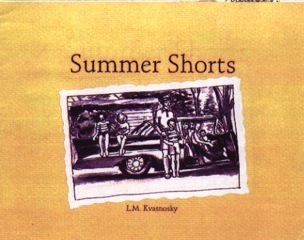
Meanwhile, Pierr Morgan, a Northwest illustrator, showed me this cool medium called gouache resist (directions here). I liked how the reds popped. Why not revisit that sibling rivalry material – only with fox characters? I simplified, reducing the cast to two.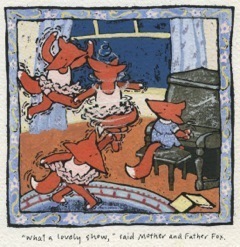
Kirby was at the table when I brought the first Zelda and Ivy stories to critique. [note from Kirby: I knew I was hearing the next Frog and Toad or George and Martha!] From that first reading, it seemed to have the juice. When it was published, Zelda and Ivy received lots of starred reviews and SCBWI’s Golden Kite honors in illustration and text. I was invited to do a sequel. Then a third.
When the fourth book, Zelda and Ivy The Runaways, came out in 2007, it had a leaner look. Candlewick’s marketing department had advised these stories belong in the early reader canon – thus we downsized to the standard 6 x 9-inch ledger size. That year the American Library Association chose it for the Geisel Award. It was the same year Kirby won the Newbery honor for Hattie Big Sky. We were both in the ballroom in downtown Seattle when our awards were announced. Pretty exciting.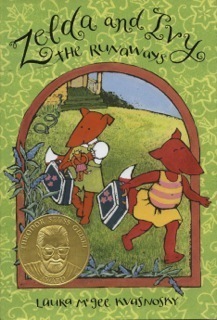
Two more Zelda and Ivy titles have followed, and the earlier ones were reformatted from picture book to ledger.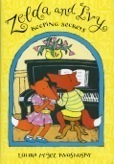
By the time I got to the sixth book, I knew Zelda and Ivy’s world as well as my own. Thus when a second-grader wrote me, “Here’s an idea: Zelda and Ivy go to the movies. You take it from there,” I knew what to do.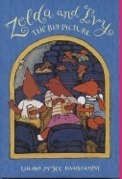
All of this is to say that Zelda and Ivy have yet another exciting edition coming out this month. All six are now officially part of Candlewick’s Sparks series for early readers; each a slim paperback that, hopefully, will fit easily into the backpacks of young readers.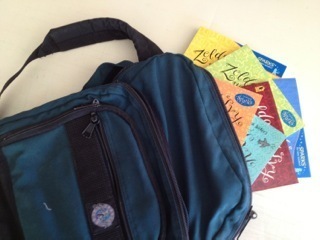
If you don't know Laura's Zelda and Ivy books, go out and get them. Right now. Each adventure of these charming fox sisters is a doozy; each book is as big-hearted and warm as its creator.

Book Adventures with Zelda and Ivy~ by Laura McGee KvasnoskyMy fox sisters celebrate a new edition this month and it seems like a good time to tell their story.

Zelda and Ivy was first published by Candlewick Press in 1998: three short stories about two fox sisters in one picture book format. Both the text and illustrations seemed to drop into my lap: gifts. But with further thought, I realized this material had been trying to become a book for a long time.We all experience moments when life is larger than usual, moments full of emotion and humor that we recognize as the stuff of story. I gathered a critical mass of such times from childhood home movies and conversations with my sibs. I wanted to make a picture book that carried our growing-up experience: our neighborhood parades, and fairy dust and, maybe most importantly, our relationships. I am the middle of five children. I know what it is to be a bossy, imaginative big sister and an adoring, gullible little sister. I thought sibling rivalry could fuel the drama.
 The McGee family
The McGee familyI first worked with this material in a project called Summer Shorts. Here’s the dummy. It included four little stories about a family with five human children. It made the rounds at publishers and was roundly rejected. Years passed while I sold other projects and got started in the picture book world.

Meanwhile, Pierr Morgan, a Northwest illustrator, showed me this cool medium called gouache resist (directions here). I liked how the reds popped. Why not revisit that sibling rivalry material – only with fox characters? I simplified, reducing the cast to two.

Kirby was at the table when I brought the first Zelda and Ivy stories to critique. [note from Kirby: I knew I was hearing the next Frog and Toad or George and Martha!] From that first reading, it seemed to have the juice. When it was published, Zelda and Ivy received lots of starred reviews and SCBWI’s Golden Kite honors in illustration and text. I was invited to do a sequel. Then a third.

When the fourth book, Zelda and Ivy The Runaways, came out in 2007, it had a leaner look. Candlewick’s marketing department had advised these stories belong in the early reader canon – thus we downsized to the standard 6 x 9-inch ledger size. That year the American Library Association chose it for the Geisel Award. It was the same year Kirby won the Newbery honor for Hattie Big Sky. We were both in the ballroom in downtown Seattle when our awards were announced. Pretty exciting.

Two more Zelda and Ivy titles have followed, and the earlier ones were reformatted from picture book to ledger.

By the time I got to the sixth book, I knew Zelda and Ivy’s world as well as my own. Thus when a second-grader wrote me, “Here’s an idea: Zelda and Ivy go to the movies. You take it from there,” I knew what to do.

All of this is to say that Zelda and Ivy have yet another exciting edition coming out this month. All six are now officially part of Candlewick’s Sparks series for early readers; each a slim paperback that, hopefully, will fit easily into the backpacks of young readers.

If you don't know Laura's Zelda and Ivy books, go out and get them. Right now. Each adventure of these charming fox sisters is a doozy; each book is as big-hearted and warm as its creator.
Published on May 24, 2013 06:30
May 23, 2013
Thursday's Thought
All things are difficult before they are easy.
Thomas Fuller
Thomas Fuller
Published on May 23, 2013 06:30
May 21, 2013
Teacher Tuesday
The irrepressible Sherry Gick works for Rossville Consolidated Schools in Rossville, Indiana. Sherry describes it as a "very unique school system." And I would have to agree: all three schools (elementary, middle, and high) are under one roof. Sherry says, "One thousand students, K-12, in one building allows for some great interactions and collaboration across grade levels and schools." Rossville sounds like the 21st century version of a one-room school house!
As the school librarian, Sherry has worked primarily with grades six-twelve in the middle/high school library. But this year, she's been privileged to work with students and classes at every grade level K-12! Sherry says "I love working with different grade levels and enjoy how it stretches me to think in different ways and challenges my creativity."
Before we learn more about Sherry's present life as a librarian, we're going to take a peek at her past.
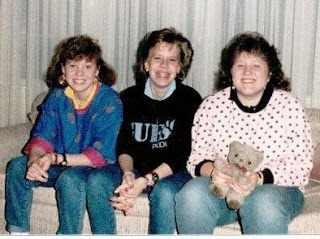 Sherry (in the middle) with her BFFs, Tracy Savell (L) and Courtney Flynt (R)
Sherry (in the middle) with her BFFs, Tracy Savell (L) and Courtney Flynt (R)Favorite school lunch as a kid: I really liked that rectangular pizza with the tiny cubes of pepperoni. It was usually served with corn and peaches. Yum!Best friend in grade school: My best friend in grade school and middle school was Courtney Flynt. The picture shows our other best friend in middle school: Tracy Savell. We rocked the 80s fashions of turned up collars, Swatch watches, Chuck Taylors, and big hair! The three of us had so much fun together!Teacher who inspired you to stretch: One of my very favorite teachers was my third grade teacher, Mr. Tom Clauset at Hall-Woodward Elementary School. I remember him challenging us to read, learn new words, and to write…a lot! My most vivid memory from this year is Mr. Clauset reading us A Wrinkle in Time by Madeleine L’Engle. He sat in his rocking chair and we gathered on the carpet to listen to him read each day. It was my first exposure to science fiction and I’ve been hooked ever since! The one thing you always wished you could do in grade school but never achieved: I really wanted to be in the orchestra and learn to play the violin. My dad said no – he was too old to listen to me learn to master a stringed instrument. He encouraged me to take band instead because it wouldn’t take long before I sounded good. I ended up playing the clarinet and loved it. It was one of the few times he said no to me! (I was the baby of four.)
Sherry, you mentioned that you’d like to talk about why you love being a librarian. So the first question would have to be: why?
I think being a librarian is the best job in the world! I get to talk about books to students all the time. I get to read children’s and teens books and say “it’s for my job!” I love connecting students with the right books. I love sharing my enthusiasm for reading with others. Seeing students excited about books and reading is an amazing, daily reward of being a librarian.
What kind of reader were you as a child?
Voracious! I remember my second grade teacher, Mrs. Bellamy, gave me a copy of Harriet the Spy at the end of our school year. The inscription says “For reading the most THICK books!” (I still have that book today!)
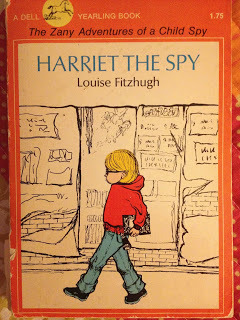
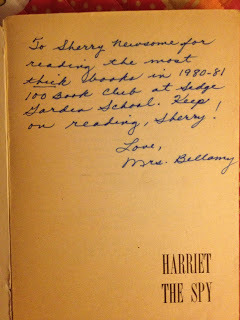
What were your early library experiences like?
I vividly remember being able to read but not being able to get a library card because I couldn’t yet write my first and last name on the card. I was overjoyed in kindergarten when I finally mastered that task! My mom would take me to the library and we would check out piles and piles of books each week to read. I loved visiting our local public library.
What inspired you to become a librarian?
I wish I had a great story about a librarian who inspired me to choose this career path, or a teacher who encouraged me to be a librarian because of my love for books, but I don’t. I started in education as a special education teacher, earned my master’s in elementary education, and after having my daughter in 2001 began working part time in a Parent Resource Center that was part of our school system. It was a unique library filled with books, toys, and games…all education related. I enjoyed working with parents and children (babies through fifth grade) helping them choose the right books and toys to borrow and take home each week.
We moved to Indiana from North Carolina in 2005 and I had to leave my beloved Parent Resource Center job. I began working part time at the public library after moving and spending a year home with my second child. I enjoyed the interactions and library setting immensely. I began working towards earning my master’s degree in Library Science. At the public library, I found I missed the school schedule (how do people work in the summer?) and also the kids. Working with adults was interesting, but I missed students.
I began a special education teaching job at Rossville in 2009. In the back of my mind I thought that it would be a great place to be a school librarian in a few years when I finished my degree. At the end of my first year, the school librarian unexpectedly retired. I immediately applied for the job, feeling excited and overwhelmed at the same time. I was hired on emergency permit. My first year as a librarian is a blur because of everything I tried to do at school plus all the graduate classes I had to finish to earn my licensure!
Your colleagues say you have a gift for putting the right books in the hands of each student. How do you lead your students to books you know they’ll enjoy?
When students come to me for book advice, I always question them about the last book they enjoyed. For some of them it’s been a long time! If they can’t think of the last “good book” they’ve read, I talk to them about movies they like. This helps me guide them to a genre section with books similar to their tastes. (I have genrefied my library to make it student-centered and friendly. Students love being able to go to “their sections” and find the types of books they love.) Once in a genre section, I then book talk three-four of my favorites that are available and let the student choose which one they think is a good fit.
How do you show your students your own love of reading/books?
I’m the crazy librarian who always talks about books! Always. I love showing new book trailers, but also enjoy going old school and simply holding up a book I’ve recently read, telling the students in 30 seconds or less how awesome it is and why. I tell my classes about my yearly reading goals and they can track my progress on goodreads and on the widget on our library website. I display books I’m currently reading or have recently enjoyed in the library. I wear reading/book related t-shirts and jewelry. I’m a bit over the top when it comes to my love of books and reading!
Students like yours, in middle school and high school, often lose interest in pleasure reading (for a variety of reasons). How do you counteract that? How can the community at large help counteract that trend?
Luckily, I have teachers at my school who understand the importance of pleasure reading and bring their classes to the library! I try to keep students reading for pleasure by having a wide range of books in the library and several programs to participate in. Each year, I book talk our state lists (Young Hoosiers and Eliot Rosewaters) and challenge every student to read at least five books from the list. Their reward for reading at least five of the books is an invitation to a special luncheon in the library, complete with bookish prizes. This yearly tradition is a can’t miss! We also have a Battle of the Books competition at the middle and high school levels with ten different books for each level. The unveiling of the book lists in October and the actual book Battles in March are highlights of the school year.
Can you share a specific anecdote or two about a wonderful connection between a kid and a book?
A sixth grade student came to library time with One for the Murphys by Lynda Mullaly Hunt.
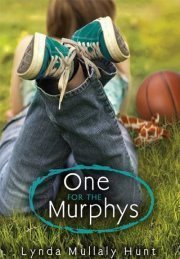
I had booktalked it several weeks before to her class. She shared that she was enjoying it and was close to finishing it. During reading time, she settled in to read. A few minutes later I noticed she was holding the book and crying. Another student sat down beside her, put her arm around her and patted her back. When I approached the pair, she continued to sob telling me, “it wasn’t supposed to end like that.” The other student agreed and told her she cried like a baby when she finished it. I shared that I too had needed many Kleenexes during the same book.
I loved knowing that these students had connected with this book in a real way that evoked their emotions. I also loved that the shared connection to the book made one student reach out to another, empathizing with what she was feeling.
What advice might you give/do you give to the parents/guardians of your students regarding reading at home?
I think parents need to be role models to their children. Don’t expect your kids to read at home if they don’t see you reading! Always take time to read something you enjoy each day. Don’t limit or belittle what your child enjoys reading. Everyone has different tastes and pleasure reading should be just that…pleasurable! Graphic novels, magazines, non-fiction, fantasy novels… there is something out there for everyone to enjoy. Give your children opportunities to read and opportunities to find new books at the library and or bookstore. Share books with your children. My kids are seven and eleven and they both still enjoy when I read books to them.
What kinds of outside resources, if any, do you employ (Skype, author websites, guest speakers) to generate interest in books/reading?
One of my favorite book talking resources is Teaching Books. It pulls together author websites, book trailers, reviews, and other information that’s super useful to share with students. I also absolutely LOVE Skype. We’ve been fortunate to have some great authors Skype in our library (e.g., R.J. Palacio, Tom Angleberger). I think that students really make a connection when they have the opportunity to “meet” an author. We also love to connect with readers in schools in other states via Skype, Edmodo, and Today’s Meet. Having authors visit our school and library is also amazing. My students have thoroughly enjoyed two visits from Mike Mullin, author of Ashfall and Ashen Winter. His books never stay on our shelves!
What do you wish I’d asked you that I neglected to ask?
You forgot to ask me how much I love Hattie Big Sky and Hattie Ever After! The answer? To the moon and back! They are hands down, my very favorite historical fiction novels. Thank you so much for writing them!
[blushing] Is it any wonder that Sherry's students go crazy over books with such a passionate and enthusiastic reading role model? If you want to learn more about Sherry's efforts to connect kids and books, check out her blog, The Library Fanatic, or follow her on Twitter: @LibraryFanatic.
Thank you, Sherry!
Published on May 21, 2013 06:30
May 17, 2013
Friend Friday
Today's guest: the warm and talented Amy Ludwig Vanderwater!
I love her new book and know you will, too.
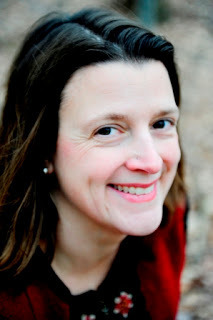
Writing as Two: Dreamer and CraftswomanBy Amy Ludwig Vanderwater
Well, my first book, FOREST HAS A SONG, is out.
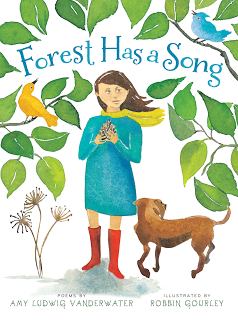
It is time to celebrate, but more so, it is time to snuggle into the next one, time to see what other useful dust bunnies I can find in my life. For that is much of what I think writing is: making time to rummage around in the brain’s attic, shopping the soul’s garage sale, believing I’ll find a good deal in the flea market of the heart. Knowing that if I wait and seek, there will be something I can clean up and use.
I do write much the way I shop, avoiding the new and shiny malls and instead poking around thrift and antique stores. Rather than heading to a plaza, I trust that I will find enchanted surprises in tucked mom-and-pop shops and other story-places. And why would writing be different? For as much as I believe in the importance of craft, I also believe in the importance of trust. And so, often, I write without knowing where the pen will lead, simply filling pages to discover what’s under that sheet. I don’t know where the pen will lead, but I keep writing anyway.
I write as two people. The first me is the dreamer, blurring her eyes, trying to find something beautiful, mystical, or surprising. This first me feels a flash of love or discovery and a shiver-tingle when rushing down the page like a waterfall, only half-knowing what she is writing. This first me listens to other voices, acting sometimes as secretary more than writer. This first me is so in love with the goldfinch outside my window right now that she wants to carry it in her pocket forever.
The second me is the craftswoman who sometimes laughs at her other half, “A goldfinch in your pocket! Are you crazy?” This second me is practical, weeding out clichés born of passion, poor structure choices, and mismatched meters. She comes through with her hammer and her broom, steadying and tidying the glorious mess left by her partner.
And so they seesaw, back-and-forth, like two sisters holding hands while they run through a summer meadow. One sees the fuzzy bees as flying flowers; the other is careful not to be stung. They need each other and they love each other too. We writers have to be kind to ourselves, no matter what those selves may be.
Want to listen to Amy reading this post? Click below!
Be sure to check out Amy's blog.
I love her new book and know you will, too.

Writing as Two: Dreamer and CraftswomanBy Amy Ludwig Vanderwater
Well, my first book, FOREST HAS A SONG, is out.

It is time to celebrate, but more so, it is time to snuggle into the next one, time to see what other useful dust bunnies I can find in my life. For that is much of what I think writing is: making time to rummage around in the brain’s attic, shopping the soul’s garage sale, believing I’ll find a good deal in the flea market of the heart. Knowing that if I wait and seek, there will be something I can clean up and use.
I do write much the way I shop, avoiding the new and shiny malls and instead poking around thrift and antique stores. Rather than heading to a plaza, I trust that I will find enchanted surprises in tucked mom-and-pop shops and other story-places. And why would writing be different? For as much as I believe in the importance of craft, I also believe in the importance of trust. And so, often, I write without knowing where the pen will lead, simply filling pages to discover what’s under that sheet. I don’t know where the pen will lead, but I keep writing anyway.
I write as two people. The first me is the dreamer, blurring her eyes, trying to find something beautiful, mystical, or surprising. This first me feels a flash of love or discovery and a shiver-tingle when rushing down the page like a waterfall, only half-knowing what she is writing. This first me listens to other voices, acting sometimes as secretary more than writer. This first me is so in love with the goldfinch outside my window right now that she wants to carry it in her pocket forever.
The second me is the craftswoman who sometimes laughs at her other half, “A goldfinch in your pocket! Are you crazy?” This second me is practical, weeding out clichés born of passion, poor structure choices, and mismatched meters. She comes through with her hammer and her broom, steadying and tidying the glorious mess left by her partner.
And so they seesaw, back-and-forth, like two sisters holding hands while they run through a summer meadow. One sees the fuzzy bees as flying flowers; the other is careful not to be stung. They need each other and they love each other too. We writers have to be kind to ourselves, no matter what those selves may be.
Want to listen to Amy reading this post? Click below!
Be sure to check out Amy's blog.
Published on May 17, 2013 06:30
May 16, 2013
Thursday's Thought
Everything comes gradually and at its appointed hour.
Ovid
Ovid
Published on May 16, 2013 06:30
May 14, 2013
Teacher Tuesday
I just have to say it again: I am so thankful Nerdy Book Club co-founder, Colby Sharp, got me going on Twitter -- otherwise I would never have met so many wonderful, passionate and big-hearted teachers. Jillian Heise is a case in point. How likely is it that a gal from Washington state and a gal from Wisconsin might cross paths except in cyberspace? Mrs. Heise teaches at Indian Community School of Milwaukee in Franklin, Wisconsin, working with seventh and eighth grade Language Arts and Reading. She was eager to share her thoughts on choice reading but, before we get to that, you know the drill. First, a peek at Jillian's past:
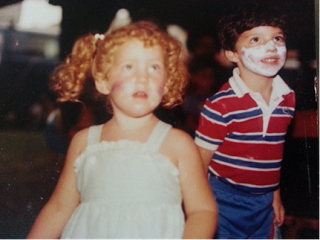 At the Porter County Fair, age 4-1/2, with her brother
At the Porter County Fair, age 4-1/2, with her brotherFavorite school lunch as a kid: Chicken Patties (and that continued into college – weren’t those always the most popular days in your cafeteria, too?)Times you were the new kid in school: Five (as much as it was difficult at the time, I still say it was one of the things that helped me develop character the most as a kid.)Teacher who inspired you to stretch: Mrs. Posner in middle school. She was a special education teacher who allowed me to come into her room during my study hall and tutor students. She even let me use the overhead projector (which was very cool at the time). She helped me to see that I could teach others the things that I understood and helped give me a sense of pride in myself and built up my self-esteem.
Now let's talk about connecting kids and books: Jillian, you mentioned that you’d like to talk about using choice reading. Why did you select that topic?
Choice reading is the thing I am most passionate about using and sharing in my teaching career. I have seen what a difference it can make for my students and how it changed my teaching. By letting students choose what they want to read, they are reading more. I am helping students come back to being readers. (Note: my emphasis. KL)
I am making better connections with my students, and seeing an increase in their motivation to read and engagement in their books. It also allowed me to stop teaching the way I had disliked being taught. I read voraciously throughout middle and high school, but not the whole class novels I was assigned to read in school, and I was guilty of doing the same thing to my students. Allowing choice led to me coming into my own as a teacher and embrace what I am passionate and knowledgeable about and to share that with my students in a way that helps them achieve at a higher level.
Why do you think there is a decline in the motivation and engagement in reading in middle school?
I think kids start to get busier in their activities outside of school and start to have more access to technology and electronics at home. There are more distractions vying for their attention, and there is more social pressure as well. Unfortunately, reading isn’t always seen as the cool and popular thing to do, so with all of those forces at work, adolescents tend to lose interest. But I think a lot of it also has to do with the way teaching is done as well. In traditional middle school classrooms, when the subjects are separated, students aren’t exposed to teachers integrating reading into as many lessons as they were in grade school. They tend to not have teachers reading aloud to them as much. And reading becomes more about work instead of about enjoyment. The trick it to hook them onto the reading by choosing good books to motivate them and then sneak the “work” into it naturally and authentically to keep their engagement.
How do you promote/advocate for choice reading for your students?
I do all I can to model reading habits and show students how reading can impact their lives to promote choice. I am always talking about books and recommending them. I have my extensive classroom library for students to choose from. I do read alouds from picture books and novels. I book talk and have students do book talks. I give reading time in class to read every day. I share my reading life with my students through my Currently Reading sign outside my door and started my reading tally for the school year outside my room.
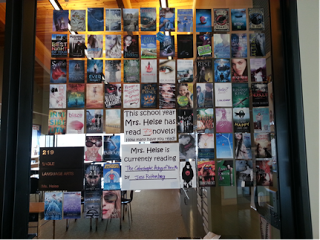
And this year I started to invite my students to participate in the 40 Book Challenge (from Donalyn Miller’s The Book Whisperer) to help them set and reach a goal for reading more books than they ever thought they could before. And, what I think is most important, I talk to my students about abandoning or pausing books, and I encourage them to do so as well if a book isn’t working for them. When they’re given the freedom to not have to finish a book if it’s not for them, they’re more likely to work to find a book that does work for them.
In order to advocate for choice reading for my students, I have had to ensure that I am knowledgeable about the research background and professional books that advocate for choice reading so that I can share that with administration and colleagues so they understand why I need to base my reading instruction around all students reading their own chosen text. Professional books from Richard Allington (read an interview here), Donalyn Miller, Kelly Gallagher, Teri Lesesne, Penny Kittle, and Nancie Atwell among others have all helped me broaden my understanding and have support when needed.
What has changed in your classroom since you’ve begun empowering students to choose their own titles?
It has become a more welcoming place, a place where all can get comfortable, and a place where reading is accepted and expected. I have seen students become more excited about reading: talking about it (in and out of class), sharing titles, reading together, passing books to each other, coming in bursting to tell me about what they just read. It’s a culture of reading in my class. Also, the biggest physical change is the number of bookshelves in my room - my classroom library is now over 1,300 books!
This year this culture of literacy has started brimming over the walls of my classroom into other rooms as well. I have fifth and sixth graders coming to ask me for title recommendations or to borrow books from my classroom. I’m known as the person to go to (whether for students, teachers, parents, or principal) if one is in need of a book recommendation.
Can you share some titles that your students have selected for themselves that surprised you?
I can’t pinpoint titles that necessarily surprised me because I encourage so much of students finding what works for them, but I am sometimes surprised by what becomes most popular among my students. I can definitely share some of titles that have most often had to be replaced because they’ve been so loved they’ve fallen apart or get passed from student to student once they’re discovered each year:
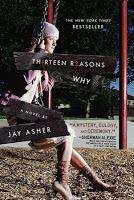
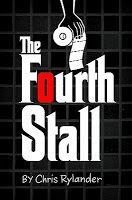
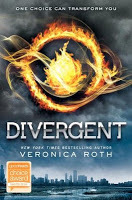
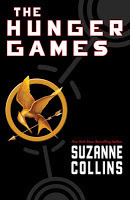
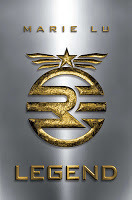
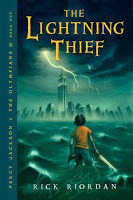
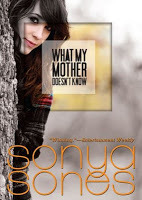
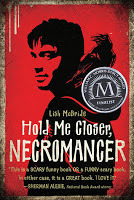
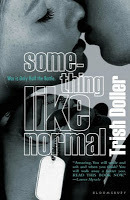

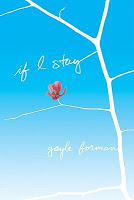
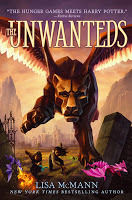
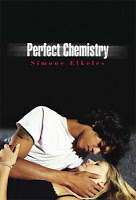
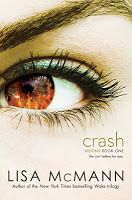
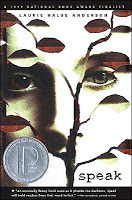
Are there things the writers and publishers can do to support you in your efforts to offer students reading choices?
-Keep writing and publishing a wide variety of stories! You never know which story is going to be the one that hooks a student or becomes that gateway book. -Be accessible! My students have access to share their thoughts with authors through twitter and they think that is one of the coolest things. If they ask me to tweet an author, and they get a response, it lights up their faces and I know they will be reading more by that author.-Let teachers know what titles are coming (and give them access if possible)! I’ve been very lucky through blogging and attending professional conferences to be able to have early access to some books, and that makes a big difference in being able to offer more to my students. I spend so much of my own money on my classroom library every year, but being able to read an eARC of a book to determine if it will be a good fit for my students first, allows me to use my limited funds more wisely and strategically. It’s hard for me to justify spending money on a book if I can’t give it a longer life on my classroom shelves.
What advice might you give/do you give to the parents/guardians of your students regarding reading at home?
First I share with them the importance of reading at home every night. I talk to the students and to the parents about this. We talk about how to make it a habit by finding that time that best works for each child. I also emphasize to them that because I offer choice reading, it is important that they talk to their child about what choices are being made. I honor the family values and preferences, but it is up to parents to be aware of and talk with their child about the reading as well. I encourage them to read the books along with their child and have conversations. Lastly, I encourage them to model reading as well as a family.
What do you wish you’d known when you started offering this opportunity to your students?
I wish I had known that I would need to be reading much, much more than I would have thought. I can’t stress enough that being a reader myself is one of the key reasons why incorporating choice reading works in my classroom. My students need that model of a reader as well as the trust that I know good books and can recommend them.
What kinds of outside resources, if any, do you employ?
I Skype with authors to allow my students access to know what it is like to be a writer. I tweet my students' thoughts to authors. I have started having student recommendations on my blog, and we use other book blogs as models for different ways to approach sharing our thoughts on a book. I also show book trailers to advertise books.
What do you wish I’d asked you that I neglected to ask?
I wish you'd asked howI go about recommending books to students. Here's the answer:
First: I read. A lot. A whole lot. And they’re all books that my students would read. (I’ve read over 100 novels this school year. This is the only way to know what books are out there to recommend. If you’re interested in starting in this direction, this is the first and most important thing you need to do for students to see you as an authority on books.) I also talk to other teachers and librarians about books often and keep up to date on blogs and twitter to stay on top of the new titles I may not have had time to get to myself, but that are recommended by those whose opinions I trust.Second: I ask, “What are you in the mood for?”Third: I ask, “What’s the last book you read that you really liked?”Fourth: If necessary (aka: a child who is not my student that I would already know this about), I ask, “What do you like to do (outside of school)?”Fifth: I walk the student to the shelf (so he or she knows how to find this book on his or her own in the future) and hand him or her a book. Or a “preview” stack of books to choose from that will fit into the parameters established by this exchange.
Wow! My head is spinning from all this great information. Once again, I wish I could redo junior high so that I could benefit from a reading teacher like you, Jillian! Thank you so much for this thought-provoking interview.
Readers who want to find out more about choice reading could visit Jillian's blog or follow her on Twitter: @heisereads.
Published on May 14, 2013 07:00
May 13, 2013
A Much Needed Smile
If you follow this blog you know I don't usually post anything except on Tuesdays, Thursdays and Fridays but when you get a heartwarming email, especially after the month I've had, you just gotta share.
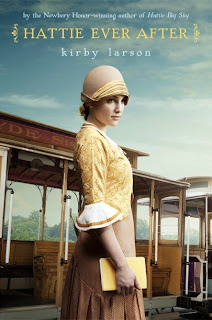
The email was from the mom of a young lady I met while on tour for Hattie Ever After. That novel mentions opera star Luisa Tetrazzini, who was/is quite famous in San Francisco for a free Christmas Eve concert she gave in 1910. Here is what the mom shared with me:
In a funny coincidence, my daughter has been asked to sing in San Francisco this coming week with the Bach Choir, who are doing a series of songs about SF, including the songs that Luisa Tetrazzini sang at Lotta's Fountain in 1910! We thought you'd appreciate the fact that people are still remembering that event. Take care!
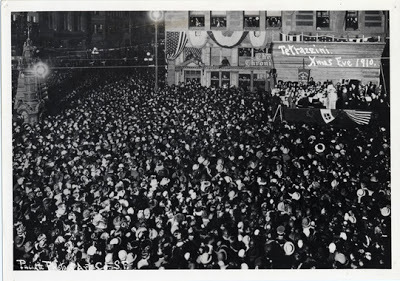 The 1910 concert; photo from the SF Chronicle
The 1910 concert; photo from the SF Chronicle
p.s. Daughter is reading Hattie Big Sky, and in our warm California spring asked me to bring her an extra quilt because your descriptions of the winter had made her feel too cold to sleep.
Sigh. My job here is done.

The email was from the mom of a young lady I met while on tour for Hattie Ever After. That novel mentions opera star Luisa Tetrazzini, who was/is quite famous in San Francisco for a free Christmas Eve concert she gave in 1910. Here is what the mom shared with me:
In a funny coincidence, my daughter has been asked to sing in San Francisco this coming week with the Bach Choir, who are doing a series of songs about SF, including the songs that Luisa Tetrazzini sang at Lotta's Fountain in 1910! We thought you'd appreciate the fact that people are still remembering that event. Take care!
 The 1910 concert; photo from the SF Chronicle
The 1910 concert; photo from the SF Chronicle
p.s. Daughter is reading Hattie Big Sky, and in our warm California spring asked me to bring her an extra quilt because your descriptions of the winter had made her feel too cold to sleep.
Sigh. My job here is done.
Published on May 13, 2013 07:00
May 10, 2013
Friend Friday
This post features two, two, two friends in one! A brand-new book by two of my favorite book world people, George Shannon and Julie Paschkis.
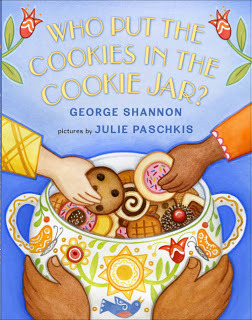
Here's a link to Julie's blog where she talks about why she jumped at the chance to illustrate George's book and some of her thinking about style choices she made.
I think this book looks absolutely delicious and think it will make a perfect first birthday present for Princess Esme!

Here's a link to Julie's blog where she talks about why she jumped at the chance to illustrate George's book and some of her thinking about style choices she made.
I think this book looks absolutely delicious and think it will make a perfect first birthday present for Princess Esme!
Published on May 10, 2013 06:30
May 9, 2013
Thursday's Thought
All the beautiful sentiments in the world weigh less than a single lovely action.
James Russell Lowell
James Russell Lowell
Published on May 09, 2013 06:30



